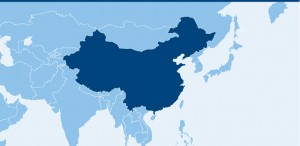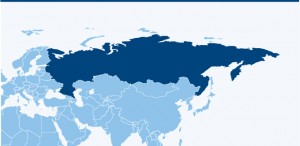“Who would have imagined a decade ago that China’s influence in Africa would be so swiftly mirrored into Western culture?”
Film-makers who trekked for days to reach a remote mountainous village in Peru found the community divided. The older generation didn’t want a mountain pass built into their village for fear that ‘bad’ men may come and destroy their way of life. Among the ‘bad’ they included people looking to profit from building homes, schools, hospitals and roads – people who would destroy their environment.
The younger generation wanted the mountain pass: it was time, they said, that their community was opened up to the world beyond; they wanted opportunities like other young people, rather than having to leave their community to find their futures. They wanted to encourage developers, and offer them bigger and better incentives (such as bamboo spears) than their neighbours may offer in another village community higher in the clouds.
For nations further along the evolutionary line, foreign direct investment (FDI) can be no less controversial – such as when foreign companies take control of what has been a traditionally national-led enterprise.
But, in 2014 and the foreseeable future, as at least half the globe looks to jumpstart renewed GDP growth and escape high unemployment among younger generations, governments are warmly welcoming foreign investors – and offering them significant incentive packages to get them aboard.
Think FDI, think China. Who would have imagined a decade ago that China’s influence in Africa would be so swiftly mirrored into Western culture? Chinese overseas merger & acquisition (M&A) investment has more than doubled in the last five years. In the first 11 months of 2013, Chinese companies announced 107 deals worth USD 43.7 billion – compared to just 45 deals worth USD 17.3 billion in the whole of 2007.
China’s increasing appetite for Western assets – and the West’s preparedness to receive Chinese investment (while drawing less attention to issues such as intellectual property) – appears hampered only by the Chinese themselves: they have a 25-30% annual staff turnover in Chinese financial services firms, and the way they currently engage in M&A deals is different from practices employed by their Western counterparts.
The Chinese want to meet the deal-maker’s entire management team several times before a deal is warmed up; Western financial advisers and private equity firms allow six months for this process. And, so far, very few Chinese companies have experienced more than one overseas M&A acquisition. But attitudes are converging, the size of deals is increasing – and Chinese M&A deals accounted for the most outbound FDI transactions in the first half of 2013, according to one of the Big Four accountancy firms. In the latest official rankings from the United Nations Conference on Trade and Development (UNCTAD), China comes a strong second, currently behind the US, for FDI received (see table below).
FDI global climate
Certainly, China and other cash-rich FDI investors have plenty to choose from. Investors, it seems, are prepared to accept greater risk in the aftermath of the global financial downturn, and the world is awash with FDI opportunities – both in countries beginning to modernise (despite a cooling of the love affair with emerging nations), and in richer developed nations seeking growth.
Take, as an example, the UK, stronghold of the global financial services industry. A glut of international M&As, and the relaxation of ownership rules, has resulted in 53.2% of the UK’s £1.8 trillion stock market being owned by international investors, according to the UK Office for National Statistics.
Companies that dominate the UK’s FTSE 100, the top tier companies, are often London-listed but not London-based. Of the £935.1 billion stake owned by foreign investors, North Americans own the biggest slice, worth £451.9 billion, followed by Europeans, who own £241.3 billion – and that is despite plunging investment in UK pension funds (down to an all-time low of 4.7% in 2012, from 21.7% in 1998, blamed on equity volatility), which has traditionally soaked up foreign investment.
It’s no coincidence that, as nations step up their FDI campaigns, the inauguration of the first-ever global association, devoted entirely to promoting cross-border investment and corporate expansion, took place in Shanghai, China, during a ‘Global
FDI conference’.
The FDI Association’s primary aim is to represent corporate decision-makers in their global expansion and development activities, connecting leaders from globally expanding companies with executives from private- and public-sector bodies around the world. It aims to “offer networking and relationship-building, and will create opportunities that spur global investment”.
An international study by UHY member firms at the end of 2013 shows that the world’s developing economies are taking a bigger share of global FDI than developed economies.
However, there are massive regional differences: China alone receives more investment than the entire continent of Africa. FDI inflows into China in 2012, at USD 121 billion, were not far behind the USD 168 billion worth of FDI into the US. However, the US’s mature economy made a far bigger input into global FDI flows than did China, contributing USD 329 billion into global FDI flows during 2012, nearly three times China’s USD 84 billion worth of investment in other countries over the same period.
FDI defined
FDI – an investment made by a company or entity based in one country, into a company or entity based in another country – typically involves a significant degree of influence and control over the company into which the investment is made. The accepted threshold for an FDI relationship, as defined by the OECD (Organisation for Economic Co-operation and Development) is 10% – the foreign investor must own at least 10% or more of the voting stock or ordinary shares of the investee company.
The investing company may make its overseas investment by:
• Setting up a subsidiary or associate company in the foreign country
• Acquiring shares of an overseas company
• Creating a merger or joint venture.
FDI trends
Open economies with skilled workforces and good growth prospects tend to attract larger amounts of FDI investment than closed, highly regulated economies.
According to OECD, the countries with the greatest share of FDI inflows as a percentage of GDP (in order, 2012 figures) are:
Luxembourg Czech Republic
Ireland Israel
Chile Portugal
Hungary Australia
Estonia Iceland
Luxembourg is way ahead of all other countries in the list because it is a base for many international companies, such as ArcelorMittal S.A, which has mining interests in several African countries – which therefore indirectly benefit from FDI inflows.
When economies are ranked by total FDI received, the latest UNCTAD official rankings are:
USD (billion)
United States 168
China 121
Hong Kong (China) 75
Brazil 65
British Virgin Islands 65
UK 62
Australia 57
Singapore 57
Russia 51
Canada 45
These 10 countries together received more than half of all global FDI; and the US and China accounted for more than 20% of it.
Several of these countries do not have significant natural resources; the real draw for FDI is the size of their populations and lower shipping costs.
Government incentives
Most countries increase FDI inflow by creating a business climate that makes foreign investors feel that their capital is safe. Obtaining a good ranking in the World Bank’s Doing Business Report and staying out of the Transparency International’s Corruption Perceptions Index help countries attract FDI.
Government incentives include:
• Low corporate tax and individual income rates
• Other tax incentives and concessions, such as tax holidays
• Preferential tariffs
• Special economic zones and export processing zones
• Bonded warehouses – a building or secured area in which dutiable goods may be stored, manipulated, or undergo manufacturing operations without payment of duty
• Employment incentives
• Protection of private property rights
• Providing guarantees for repatriation of investment and profits
• Access to ‘soft’ loans
• Infrastructure subsidies
• Research & development support
• Derogation from regulations.
Examples of incentives among countries ranked in the top 10 for total FDI inflow are here:
CHINA
 The Shanghai Free Trade Zone is expected to generate still more inbound FDI in China. The government allows companies in Special Economic Zones to have more free market-oriented economic policies and flexible governmental measures than companies in the rest of mainland China.
The Shanghai Free Trade Zone is expected to generate still more inbound FDI in China. The government allows companies in Special Economic Zones to have more free market-oriented economic policies and flexible governmental measures than companies in the rest of mainland China.
The government has also launched Qianhai Equity Exchange, in She-nzhèn, its biggest-to-date, over-the-counter (OTC) exchange, aimed at delivering easier finance to small and medium-sized enterprises.
China’s population of 1.3 billion (19% of the world’s population) has a vast potential for consumption and in the last few years the purchasing power of the Chinese has also increased dramatically, making the republic a draw for investment in chemicals, drinks, household electrical appliances, cars, electronics and pharmaceuticals.
The availability of land, relatively low-cost labour and natural resources are key to attracting still more investors. And immense development in infrastructure greatly influences the investors’ decision.The more highways, railways and transport waterways are adjusted to the size of each province, the more FDI flows in. Improved telecommunications also play a major role.
Relaxation of restraints; reductions in national and local income taxes, land fees, import and export duties; and priority treatment in obtaining basic infrastructure services all contribute to the government’s FDI incentive.
 The Russian Federation has enjoyed significant FDI inflows (and outflows) in recent years, despite much-publicised political disincentives over corporate ownership. In 2012, total inflows were USD 51.4 million and total outflows USD 51.06 million. Just a year before, Russia enjoyed FDI growth of 22%, reaching an accumulative total of USD 53 billion, the third highest level ever recorded globally. (Source: UNCTAD)
The Russian Federation has enjoyed significant FDI inflows (and outflows) in recent years, despite much-publicised political disincentives over corporate ownership. In 2012, total inflows were USD 51.4 million and total outflows USD 51.06 million. Just a year before, Russia enjoyed FDI growth of 22%, reaching an accumulative total of USD 53 billion, the third highest level ever recorded globally. (Source: UNCTAD)
By sector ranking, most FDI projects into Russia supported the automotive sector, followed by food, machinery, chemicals and non-metallic mineral products.
The potential in Russia is still strong.
For example, 40% of the telecommunications infrastructure was reported to be ‘not established’ in Russia in 2013; there was a 45% opportunity in education; and 37% of transport and logistics infrastructure was in need of investment. (Source: Russia Attractiveness Survey)
Tax incentives (such as tax holidays, benefits for research & development and reduced social insurance contributions) are available to investors in Russian Federation special economic zones and in regional government industrial parks. Some regional governments offer reduced tax rates on their share of profits. The government has also set up more than 20 Free Customs Zones to increase exports. Investors in these zones receive tax incentives.
UHY’s member firms in Russia are:
UHY Yans-Audit LLC
Contact: Nikolay Litvinov
Email: n.litvinov@uhy-yans.ru
UHY Eccona LLP
Contact: Elena Sedavkina
Email: eka-audit@mail.ru
 An integrated series of incentives and programmes has been tailor-made to welcome investors into Singapore. These developments have earned Singapore the reputation for being the world’s easiest place to do business, as well as the most competitive Asian economy.
An integrated series of incentives and programmes has been tailor-made to welcome investors into Singapore. These developments have earned Singapore the reputation for being the world’s easiest place to do business, as well as the most competitive Asian economy.
SPRING Singapore is the enterprise development agency for growing innovative companies and fostering a competitive SME sector. It aids start-up enterprises in financing, capabilities and management development, technology and innovation, and access to markets. It is also the national standards and accreditation body.
Financial incentives are offered to investors ready to expand their businesses, covering areas from equipment and technology, to business development, R&D and intellectual property, headquarters management, and industry development.
UHY’s member firms in Singapore are:
UHY Lee Seng Chan & Co
Contact: Lee Sen Choon
Email: senchoon.lee@uhylsc.com.sg
UHY Diong
Contact: Albert Chin
Email: tarcsg@singnet.com.sg
Detailed information about investing in countries abroad is given in the UHY Doing Business Guides on the UHY website at: www.uhy.com/publications/


